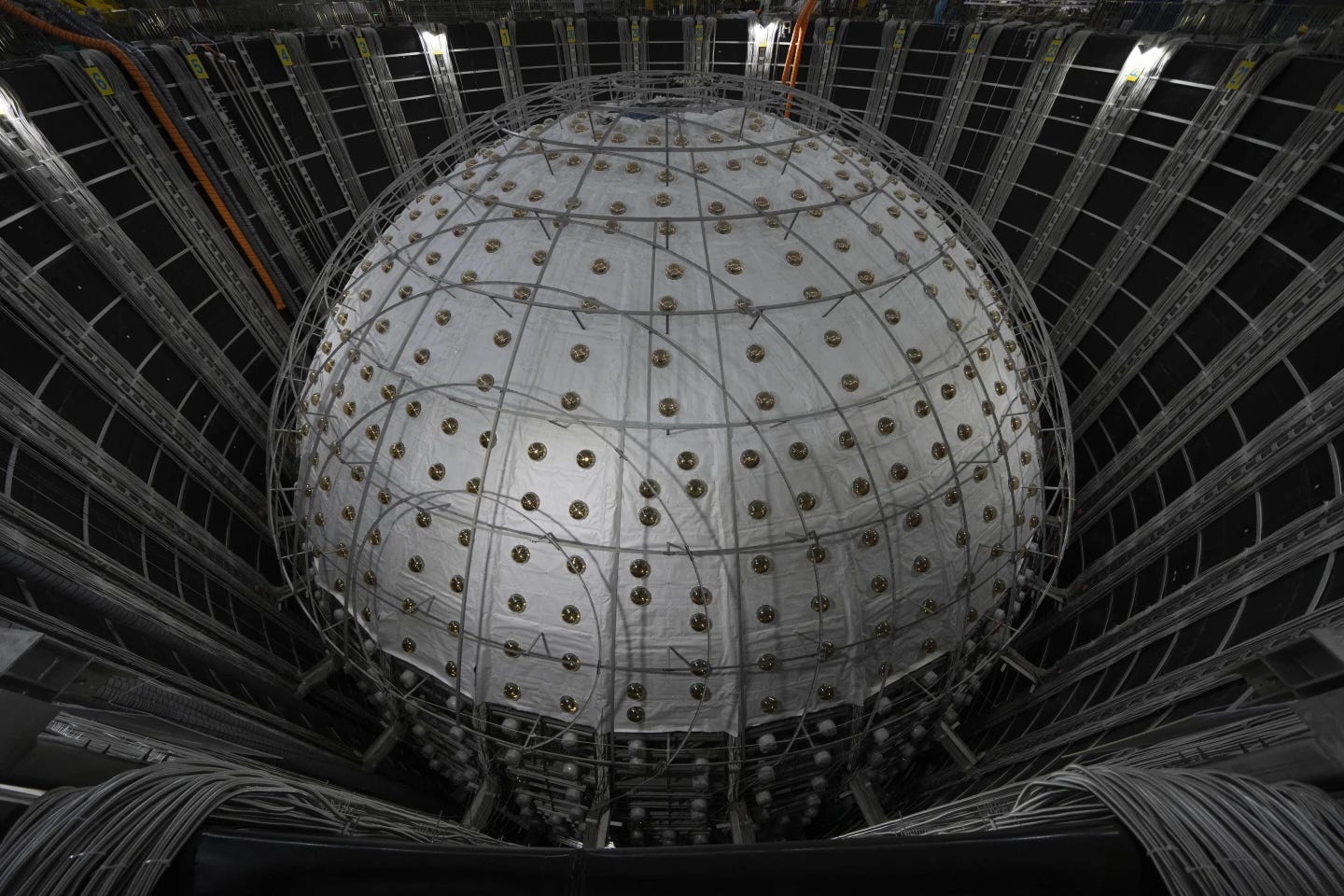China's New Neutrino Detector Aims to Unravel Cosmic Mysteries
KAIPING, China (AP) — Beneath a granite hill in southern China, a state-of-the-art detector is nearing completion, poised to detect the elusive ghost particles known as neutrinos that continuously pas
The Jiangmen Underground Neutrino Observatory (JUNO) will soon embark on the challenging task of identifying neutrinos, minuscule cosmic particles with an incredibly small mass.
JUNO is one of three cutting-edge detectors being built worldwide to study these elusive particles in greater detail. The other two, located in the United States and Japan, remain under construction.
Detecting neutrinos is a crucial step toward understanding the universe's origins. The Chinese observatory, expected to go online next year, will push scientific boundaries, according to Andre de Gouvea, a theoretical physicist at Northwestern University who is not affiliated with the project.
“If they can achieve this, it would be an incredible accomplishment,” he said.
Understanding Neutrinos Neutrinos have existed since the Big Bang, and trillions pass through the human body every second. They are emitted by stars like the sun and generated during high-energy collisions in particle accelerators.
Though scientists have known about neutrinos for nearly a century, their properties remain a mystery.
“It’s the least understood particle in physics,” said Cao Jun, a scientist involved in managing JUNO. “That’s why we must study them.”
Because neutrinos rarely interact with other matter, they are nearly impossible to observe directly. Instead, scientists track their interactions, which create brief flashes of light or charged particles.
Building a Detector for Tiny Particles Since neutrinos collide with other particles only on rare occasions, researchers need enormous detectors to increase their chances of observation.
“The best way to detect neutrinos is to construct very large detectors,” de Gouvea explained.
JUNO, a $300 million facility in Kaiping, China, took more than nine years to build. Its underground location—2,297 feet (700 meters) below the surface—shields it from cosmic rays and radiation that could interfere with measurements.
On Wednesday, workers initiated the final construction phase. Once completed, the spherical detector will be filled with a special liquid that emits light upon neutrino interactions and will be submerged in purified water.
The observatory will focus on antineutrinos—neutrino counterparts—that are generated from collisions within two nuclear power plants situated about 31 miles (50 kilometers) away. When these antineutrinos interact with particles inside the detector, they will produce tiny flashes of light.
JUNO is specifically designed to help scientists determine the mass hierarchy of neutrinos. As these particles oscillate between three different types, researchers aim to establish their order from lightest to heaviest.
Detecting these subtle variations is a formidable task, said Kate Scholberg, a physicist at Duke University who is not involved in the project.
“It’s an ambitious challenge to take on,” she noted.
The Chinese detector is expected to begin operations in the latter half of next year. Afterward, data collection and analysis will take time, meaning scientists will have to wait for deeper insights into the nature of neutrinos.
Similar efforts are underway globally. Japan’s Hyper-Kamiokande and the U.S.-based Deep Underground Neutrino Experiment are under construction and set to launch around 2027 and 2031, respectively. These projects will validate JUNO’s findings using different methodologies.
“With these combined efforts, we will gain a deeper understanding of fundamental physics,” said Wang Yifang, chief scientist and project leader of JUNO.
Unraveling the Universe’s Origins Despite their elusive nature, neutrinos have existed since the dawn of the cosmos. Investigating these ancient relics could offer vital clues about the evolution and expansion of the universe.
“They are an essential piece of the cosmic puzzle,” Scholberg explained.
One key mystery scientists hope neutrinos can help solve is why the universe consists predominantly of matter, while its opposite counterpart, antimatter, is largely absent.
Researchers are still uncertain how this imbalance occurred, but they suspect neutrinos played a fundamental role in shaping the universe’s early structure.
The answers, scientists believe, lie within these ghostly particles. Now, they must capture them to unlock their secrets.


